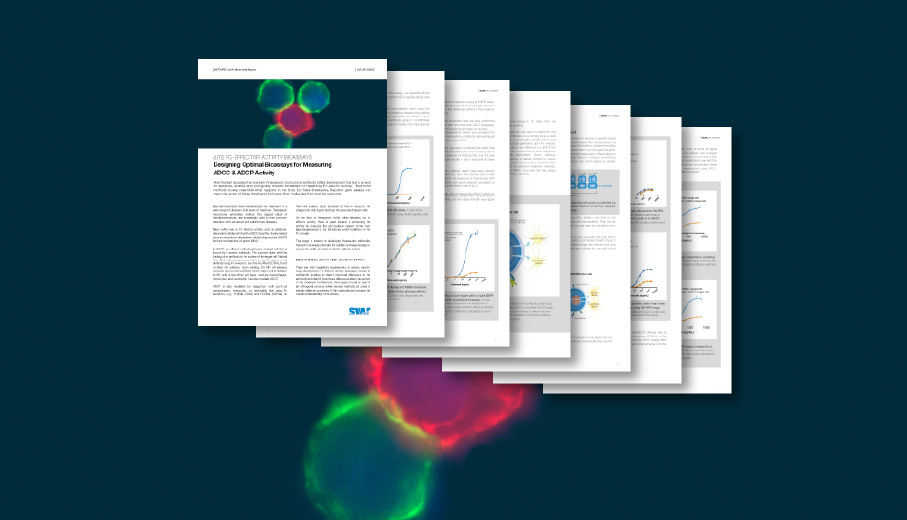- Other Products
- CCP
Over the last decades, the interest in therapeutic monoclonal antibody (mAb) development has led to a need for sensitive, reliable, and biologically relevant bioassays for measuring Fc-effector activity. Traditional methods closely resemble what happens in the body but have drawbacks. Reporter gene assays can overcome some of these drawbacks but have other challenges that must be overcome.
Classical methods typically use effector cells, either as peripheral blood mononuclear cells (PBMCs) or purified NK cells derived from individual human donors. These methods more closely resemble what happens in the body but are labor-intensive and have a high level of inherent variability due to the use of primary human cells from different donors.


Over the last decades, the interest in therapeutic monoclonal antibody (mAb) development has led to a need for sensitive, reliable, and biologically relevant bioassays for measuring Fc-effector activity. Traditional methods closely resemble what happens in the body but have drawbacks. Reporter gene assays can overcome some of these drawbacks but have other challenges that must be overcome.
Classical methods typically use effector cells, either as peripheral blood mononuclear cells (PBMCs) or purified NK cells derived from individual human donors. These methods more closely resemble what happens in the body but are labor-intensive and have a high level of inherent variability due to the use of primary human cells from different donors.
On the other hand, reporter-gene-based approaches can allow highly accurate determination of the ability of mAbs to elicit ADCC or ADCP. However, they represent a more artificial environment. Consequently, a significant challenge in designing reporter-gene assays is to make them as physiologically relevant as possible.
Cell-based reporter assays can be used to determine the potency of therapeutic antibodies on a binding level as well as on a functional level by measuring the specific ADCC and ADCP induced response signal generated upon Fc receptor activation. Changes in potency are reflected in a shift of the EC50 (half-maximal effective concentration) while displaying consistently comparable asymptotes (same efficacy). That makes cell-based assays a reliable method to ensure consistent potency in the production of mAbs. However, these assays should ideally be compared to traditional methods, such as those based on PBMC, to ensure that the assays have similar pharmacokinetic properties.
Download the white paper to learn about Fc-effector activity bioassay design and how the iLite® assays have been designed to offer a powerful and convenient way of measuring ADCC and ADCP activity while minimizing the disadvantages usually associated with reporter-gene assays.